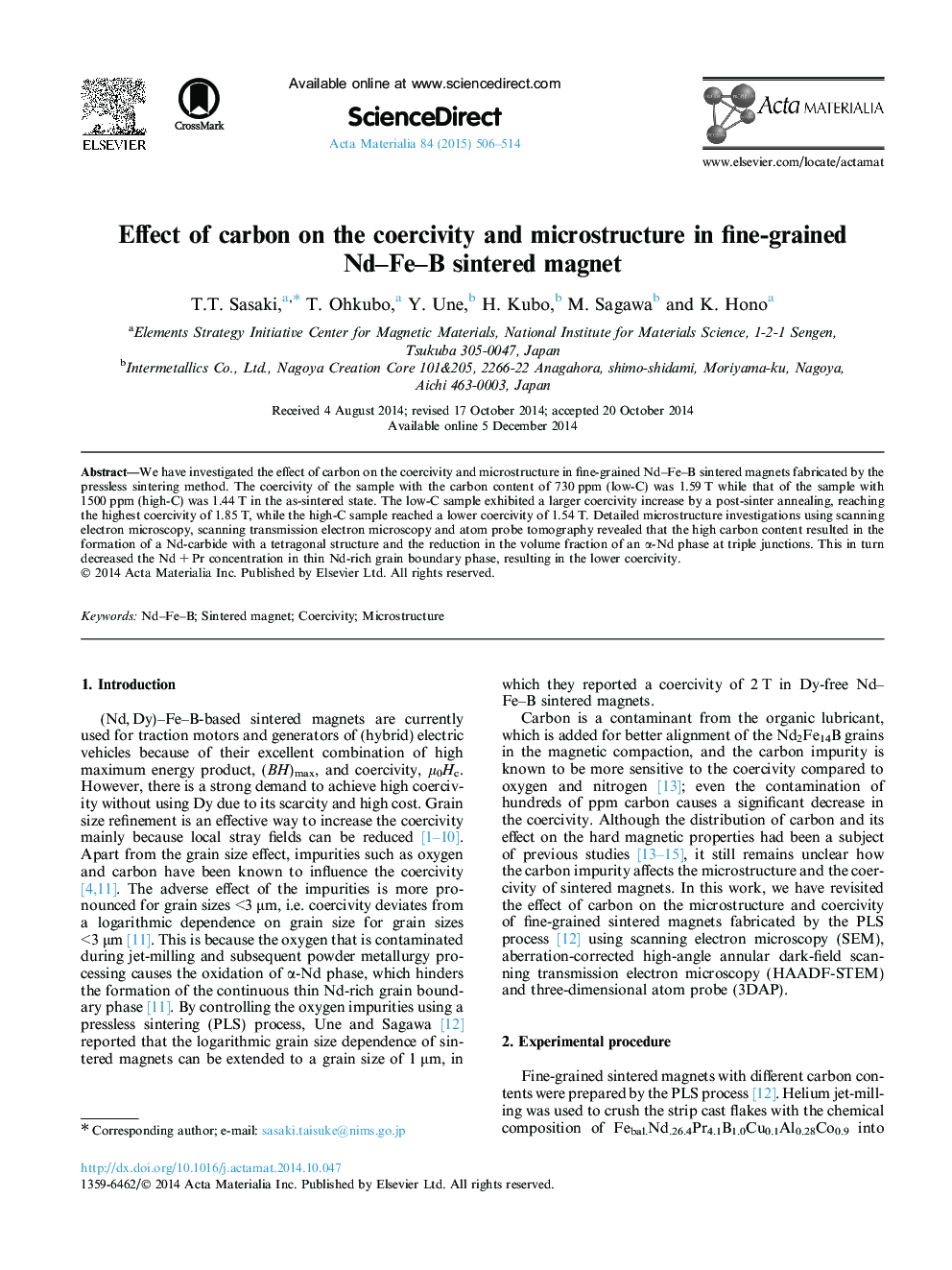| Article ID | Journal | Published Year | Pages | File Type |
|---|---|---|---|---|
| 1445457 | Acta Materialia | 2015 | 9 Pages |
We have investigated the effect of carbon on the coercivity and microstructure in fine-grained Nd–Fe–B sintered magnets fabricated by the pressless sintering method. The coercivity of the sample with the carbon content of 730 ppm (low-C) was 1.59 T while that of the sample with 1500 ppm (high-C) was 1.44 T in the as-sintered state. The low-C sample exhibited a larger coercivity increase by a post-sinter annealing, reaching the highest coercivity of 1.85 T, while the high-C sample reached a lower coercivity of 1.54 T. Detailed microstructure investigations using scanning electron microscopy, scanning transmission electron microscopy and atom probe tomography revealed that the high carbon content resulted in the formation of a Nd-carbide with a tetragonal structure and the reduction in the volume fraction of an α-Nd phase at triple junctions. This in turn decreased the Nd + Pr concentration in thin Nd-rich grain boundary phase, resulting in the lower coercivity.
